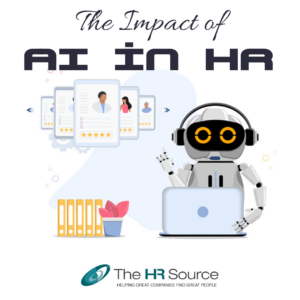Part 3: The Workplace Culture Paradigm Shift
Remember Paradigm Shifts? The term was coined by Thomas Kuhn referring to how scientists change their thinking over time. It is defined as “an important change that happens when the usual way of thinking about or doing something is replaced by a new and different way.” The COVID-19 Pandemic is reliant on science for solutions, and we can apply the scientific basis of a Paradigm shift to the “new” workplace.
We are not returning to work – many of us never stopped. What is new is the way most employees think about a workplace and how it is defined. Ryan Roslansky, CEO of LinkedIn refers to this shift as the #GreatReshuffle and #NewWorldOfWork. With this mindset change comes an opportunity to create a workplace that responds to employee needs now and is prepared for more change in the future.
The paradigm shifted when businesses first moved operations into our homes. We became 100% reliant on technology, both to do our work and as our primary means of interacting with others. There was an initial burst of productivity as employees bonded over “We’re all in this together!” in the same virtual room with people they already felt connected to. Much of the positive feedback and reported increased remote work productivity related to managers who pushed down more autonomy and decision making and focused on measuring outcomes rather than keystrokes and hours logged in.
Over time, digital overload became real. Microsoft 365 reported that the number and length of virtual meetings and chats had more than doubled by February 2021 and continued to rise. Anxiety, fear and burnout became the norm. In a study by SHRM , 72% of leaders felt work culture had improved since the pandemic but only 19% of American workers agreed. Leaders may be focusing on the productivity boost while for workers, continued stress, particularly over whether they will have to return to the office, define the current culture. Over 70% of workers want flexible remote work and over 65% are craving more in person interactions with colleagues.
The cure? Creating a positive and well-defined work culture has been shown to increase job satisfaction, productivity, employee engagement, retention and profitability. The new workplace culture must offer flexible remote work balanced with in-person work time that strengthens relationships and collaboration. According to Gartner, by 2022, 70% of the global knowledge workforce will work from home all or some of the time.
As we make the paradigm shift to a flexible hybrid workplace, here are some guidelines:
- Similar to our discussion in Part 2 of vaccination policies, implementing a hybrid work model requires considerations of employees’ job, geographic location and the interaction those positions have with coworkers, clients or customers. Establishing the criteria for who may work remote and when must be fair yet consider the unique needs of employees.
- Trust is a must. A successful hybrid workplace allows employees to know how they best work, with no micromanaging and burdensome oversight tools.
- Take advantage of remote work options to recruit a wider diversity of talent outside your geographic area.
- Employees need resources, tools, and skills to equally contribute remotely. Both technology resources and technical abilities can vary greatly among employees. Employers must identify technological competence, and
- Redesign onboarding processes to accommodate both in-person and remote workers, including separate “first day in the office” onboarding.
- Remote employees can use their online status bar to show your “open door”. A message like “Open for chats!” along with a green status circle gives permission to bridge the distance gap.
- Re-design meetings. Is the purpose strategy, collaborative problem solving or information sharing? The purpose drives the structure and the time required. Prevent silos by forcing interactions across teams and departments.
- Make in office time worth the effort and expense of commuting, preparing to go to the office, and arranging care for others. Focus on personal and group interactions and problem-solving discussions that can’t be accomplished as well remotely.
- Employees may be more reluctant to express disagreement, especially virtually when it is harder to read non-verbal communication. Encourage respectful disagreements and invite different points of view into the conversation.
- Prepare for Gen C or Generation COVID, the generation that will hit the job market following almost 2 years of online school and limited social interactions. They may need coaching on in person workplace interactions.
In creating the new paradigm for your workplace, make sure that people understand your rationale, and have the humility to evaluate what works, and what doesn’t, and to be ready to “pivot” accordingly. History will mark this as a time of holistic change in the workplace resulting in an overdue mindset recalibration regarding work, productivity, and culture. To implement the changes associated with this shift, the roles and responsibilities of HR departments worldwide are also being redefined. In Part 4 of our Return-to-Work series we will explore the impact of the pandemic on the job of managing human resources.
Defining the workplace, its culture and the associated policies are a very important decision for most companies. Need help navigating? Contact The HR SOURCE. 301-459-3133/thehrsource.com.




